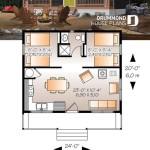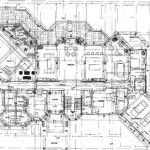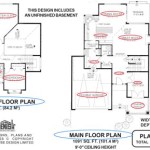Why Are There Suddenly So Many Planes Flying Over My House?
The noticeable increase in aircraft traffic over a specific residence can be a cause for concern or, at the very least, curiosity. Several factors contribute to changes in flight patterns and altitude, leading to a perception of significantly more planes traversing a previously quiet airspace.
Understanding these factors requires exploring aspects of air traffic control, weather patterns, seasonal adjustments, and modifications to established flight routes. Each of these elements can independently or collectively influence the frequency and visibility of planes overhead.
Changes in Air Traffic Control Procedures
Air traffic control (ATC) is a complex system designed to manage the safe and efficient flow of air travel. The Federal Aviation Administration (FAA) in the United States, and similar organizations in other countries, is responsible for establishing and maintaining the procedures used to guide aircraft. Adjustments to these procedures, often implemented without direct public announcement, can dramatically alter flight paths and noise levels in specific geographic areas.
These adjustments can be driven by various needs, including optimizing flight efficiency to reduce fuel consumption and emissions. Modern air traffic management systems aim to create more direct routes, shortening flight times and lowering operational costs for airlines. While beneficial on a broader scale, these optimized routes might concentrate air traffic over previously less-affected residential areas.
Another reason for changes in ATC procedures is the implementation of new technologies. The Next Generation Air Transportation System (NextGen) in the United States, for example, is a comprehensive initiative to modernize the national airspace system. NextGen utilizes satellite-based navigation, which allows for more precise flight paths and potentially steeper approach angles into airports. This can mean that planes are flying lower and closer to residential areas than they did previously.
Furthermore, airport expansion or renovation projects can necessitate temporary or permanent changes to flight patterns. Runway closures, construction activities, or the addition of new terminals may force air traffic controllers to reroute aircraft to accommodate the altered airport infrastructure. These rerouting efforts might disproportionately impact certain communities situated near the airport.
The FAA also undertakes periodic reviews of existing flight paths to address noise complaints or safety concerns. These reviews can result in modifications to flight corridors, effectively shifting the burden of aircraft noise from one area to another. While these changes are intended to improve the overall quality of life for residents near airports, they can inadvertently increase the frequency of flights over previously quieter neighborhoods.
It is important to note that air traffic control decisions are based on a multitude of factors, including air traffic density, weather conditions, and the operational status of airports and airspace. Each flight is individually managed to ensure safety and efficiency, and changes to procedures are implemented in accordance with established regulations and guidelines.
The Impact of Weather and Seasonal Variations
Weather plays a significant role in determining flight paths and altitudes. Wind direction, temperature, and cloud cover can all influence how planes are routed and how they approach an airport. Consequently, changes in weather patterns can lead to noticeable shifts in air traffic over a specific location.
Wind is a particularly critical factor. Airplanes typically take off and land into the wind to maximize lift and minimize ground speed. Therefore, a change in prevailing wind direction can result in a shift in the approach and departure patterns at an airport. This means that planes that previously approached from one direction may now be approaching from a different direction, potentially flying over areas that were not previously affected by air traffic.
Temperature also affects air density, which in turn impacts aircraft performance. On hotter days, air is less dense, requiring longer runways for takeoff. In some cases, airlines may need to reduce the weight of their aircraft (by limiting cargo or passengers) to compensate for the reduced lift. To avoid these limitations, pilots may opt for different takeoff or landing procedures, which can alter flight paths and noise levels.
Seasonal variations in weather patterns can also contribute to changes in air traffic. For example, during the summer months, thunderstorms are more common, particularly in certain regions. Air traffic controllers must reroute aircraft to avoid these storms, which can lead to temporary increases in air traffic over other areas.
Similarly, during the winter months, snow and ice can affect airport operations. Runways may be closed for clearing, and planes may need to be de-iced before takeoff. These factors can cause delays and rerouting, leading to increased air traffic over alternative areas.
The specific impact of weather on flight patterns varies depending on the geographic location and the prevailing weather conditions. However, it is undeniable that weather plays a significant role in shaping air traffic patterns and can explain why residents may suddenly notice more planes flying over their houses.
Modifications to Established Flight Routes
Established flight routes, also known as airways or air corridors, are defined paths in the sky that aircraft follow when traveling between airports. These routes are designed to ensure safe separation between aircraft and to optimize air traffic flow. However, these routes are not static and can be modified or updated for a variety of reasons.
One reason for modifying flight routes is to address noise complaints from communities living near airports. The FAA and other aviation authorities often work with local communities to develop noise abatement procedures, which may involve shifting flight paths to avoid densely populated areas.
These noise abatement procedures can be complex and may require extensive analysis to ensure that they do not compromise safety or efficiency. In some cases, the only way to reduce noise in one area is to shift it to another area, which can lead to increased air traffic over previously quieter neighborhoods.
Another reason for modifying flight routes is to accommodate changes in air traffic demand. As air travel grows, the existing airspace may become congested, requiring the creation of new routes or the modification of existing ones to improve air traffic flow. These changes can be particularly noticeable in areas near major airports or air traffic hubs.
Technological advancements can also lead to modifications in flight routes. The implementation of satellite-based navigation systems, such as GPS, has allowed for more precise flight paths and more efficient use of airspace. This can result in changes to established flight routes, as aircraft are now able to fly more direct routes between airports.
Finally, changes in airspace regulations or international agreements can also necessitate modifications to flight routes. For example, the establishment of new protected areas or the negotiation of new air traffic agreements between countries can require adjustments to existing flight paths.
The process of modifying flight routes is typically a lengthy and complex one, involving extensive consultation with stakeholders, including airlines, air traffic controllers, and local communities. However, these modifications can have a significant impact on air traffic patterns and can explain why residents may suddenly notice more planes flying over their houses.
Why Are There So Many Planes Flying Over My Neighborhood Does It Seem Like More In The Sky Now Than Ever Before Quora
Why Are The Military Jets Flying Over My House For Hours When Air Show Doesn T Start Until This Weekend Is Not Practice Quora
Why Are The Military Jets Flying Over My House For Hours When Air Show Doesn T Start Until This Weekend Is Not Practice Quora
I Had About 30 Planes Flying Over My House Today Leaving One Streak Of White Lines Is It Crazy To Have That Many At Once Quora
Why Are The Military Jets Flying Over My House For Hours When Air Show Doesn T Start Until This Weekend Is Not Practice Quora
Why Would A Fighter Jet Be Flying Over City Late At Night Quora
When Air Force Jet Fighters Fly Over Your Town Home Etc Loudly Likely Training And Or Practicing What Are Thoughts Quora

What Plane Just Flew Over My House Here S An Easy Way To Find Out

What Plane Just Flew Over My House Here S An Easy Way To Find Out

Would A Fighter Pilot Shoot Down Private Airplane Smithsonian
Related Posts








